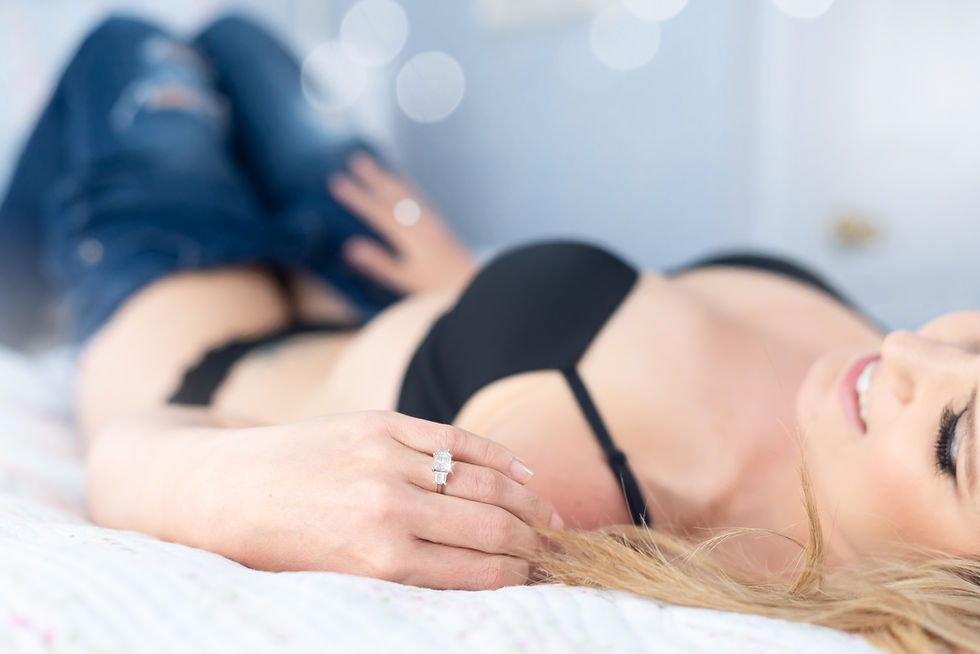3 Mirrorless Cameras For Boudoir Photographers
- Mike Cassidy

- Jan 7, 2020
- 3 min read
Updated: Jan 21, 2024

Welcome to the future! Like me, you've probably been shooting a DSLR your entire professional career. DSLRs are tried, tested, and work great across all brands. The DSLR is a product that has been in development for decades, and by this point the kinks have long since been worked out and they are reliable tools that provide great images.
Not only that, by this point you're most likely heavily invested in a brand and have accumulated a small army of (expensive) lenses needed to perform your job.
If you're like me, you are buying new gear every few years. Let's face it. Your camera is your most important tool, so it needs to be kept in great shape and working. Typically, at the end of your personal upgrade cycle (whatever length that would be) you'd head to your favorite online camera retailer and look for the newest version of your favorite camera from your brand: whether that be Sony, Nikon, Cannon, Fuji, etc. You'd pop out your credit card, cringe a bit at the price, and *Boom* your new "baby" is on the way.
The photography industry is nothing, if in constant flux. Just as Netflix surpassed the video store, at one point-- possibly sooner than later-- the MILC (Mirrorless Interchangeable Lens Camera) may be replacing the DSLR. Mirrorless may be the only option in the not too distant future.
If you haven't switched to mirrorless yet, it may be an option during your next upgrade cycle. It gets a bit complicated, though...
Mirrorless cameras are certainly a compelling option, and many photographers have already ditched their DSLRs in favor for the mirrorless format. Others though, are a bit more hesitant.
In many respects mirrorless cameras are more capable than DSLRs and hold advantages. In boudoir photography, one such advantage is the ability to see a live preview through the cameras EVF. Imagine doing a lay down pose with your client and wanting a specific focus point and a nice lens blur at everything beyond. You can see the actual photo result right in the viewfinder with a full depth of field preview...even before you snap the shot! Saving the trouble a composing, shooting, examining the photo, and recomposing at a different aperture if things didn't come out the way you expected. Nice!
Despite these innovations, there are still may be reasons to stick with your trusty DSLR for the time being. Your switch to mirrorless may require the purchase of new lenses or lens adapters, which certainly is an added cost. Some manufacturers have changed their lens mounts in the process of retooling their cameras to mirrorless. Your existing lenses may not be rendered useless, but you may need a lens adapter to keep continuing your existing glass with a new MILC.
Why would you have to get new lenses? That gets a bit complicated, but simply stated, some newer mirrorless cameras may have extremely high resolution, possibly different lens mounts or sensor sizes. Even though your existing lenses may work fine, new lenses explicitly made for these systems are designed to deliver premium images at extremely high pixel counts without distortion, vignetting, or other type lens problems.
Additionally, your new mirrorless camera may lack some necessary accessories (Why! Nikon, Why! No shutter buttons on your vertical grip...) which you relay on daily. Consider that the new mirrorless world is a fairly new venture for manufacturers, and some products are in "first-gen" status. Familiar features you rely on may not be available, or may not have been implemented on your brand via firmware update... yet. Additionally, manufacturers are slowly retooling these new lenses for their systems, so the full array of glass typically available may not yet be available.
From an imaging aspect, the results are terrific all around, and make beautiful boudoir shots. As a boudoir photographer, your life can be easier with such a system.
Mirrorless is still a relatively new technology. It seems Sony has the longest history in the technology and probably a bit of a lead at this point, but others will be catching up, shortly. Have you thought about making the switch, yet?
If so, below are three great candidates to be your next boudoir MILC. Which will you choose?
Sony A7 MkIII

Body type: SLR-style mirrorless
Max resolution: 7952 x 5304
Effective pixels: 42 megapixels
Sensor size: Full frame (35.9 x 24 mm)
Sensor type: BSI-CMOS
ISO: Auto, 100-32000 (expands to 50-102400)
Check out the Sony A7R Mk III here or on B&H here.
Nikon Z6

Body type: Rangefinder-style mirrorless
Max resolution: 6048 x 4024
Effective pixels: 25 megapixels
Sensor size: Full frame (35.9 x 23.9 mm)
Sensor type: CMOS
ISO: Auto, 100-51200 (expands to 50-204800)
Check out the details on the Nikon Z6 here, or on B&H here.
Canon EOS R

Body type: SLR-style mirrorless
Max resolution: 6720 x 4480
Effective pixels: 30 megapixels
Sensor size: Full frame (36 x 24 mm)
Sensor type: CMOS
ISO: Auto, 100-40000 (expands to 50-102400)
Check out the details on the Canon EOS R here, or on B&H here.



